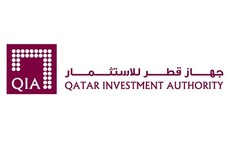
Portfolio level HR: Human traffic

Private equity firms in Asia are paying more attention to recruitment at the portfolio level, in some cases allocating dedicated in-house resources. How is it impacting attitudes towards leadership change?
Allegro Funds is in the market for a human capital operating partner. The Australia-based private equity firm specializes in turnarounds and transformations: divestments of underperforming assets by corporates and partnerships with founders or shareholders that want to breathe new life into their businesses. Changes in the C-suite are routine, with operating partners often deployed on an interim basis. But Allegro wants specialist input when it comes to making permanent hires.
"This person would attend management meetings and get involved before a deal closes, looking at capabilities and for any red flags. Then during the first phase of ownership, you run 360 reviews, cultural surveys and tests to ascertain what you are dealing with so you hire the right kind of people," says Adrian Loader, a managing partner with the firm. "If you get it wrong, especially with a CEO, it can cost you a year."
Allegro is not alone in emphasizing in-house human resources expertise. Several global and pan-regional GPs have people in Asia dedicated to portfolio level talent. Some smaller managers are embracing the trend as well. For example, Nguyen Thi Minh Giang, the resident talent specialist at Vietnam's Mekong Capital was recently promoted to partner.
Viewed through a broader value creation lens, the focus on HR represents a logical strategic evolution. Just as PE firms in Asia accepted the need for operating partners, they are now introducing functional expertise. For areas of common concern to portfolio companies – from digitization to finance to HR – it might make sense to develop internal resources.
At the same time, there is no definitive solution. The way in which a GP addresses HR reflects the nature of its investments, its operational philosophy, and its scale. In-house functional expertise doesn't have to be part of the recipe: recruitment planning could be outsourced or handled by operating partners tapping their own networks, with largely the same outcome. But there is a recognition that being proactive can boost performance.
"Private equity firms are becoming much more sophisticated in how they think about talent, how they think about finding the right people for critical roles in their portfolio companies, and also in the development of people they have," says Neil Waters, a partner and head of the Hong Kong office at Egon Zehnder. "They are thinking more carefully about how they deploy internal resources and also their engagement with firms like us."
Starting points
During due diligence, a prospective PE buyer will get a sense of the strengths and weaknesses of incumbent management. Much rests on the context. Where an asset is being carved out, some executives might not come with the business, while other positions are empty because functions were fulfilled at parent level, so the needs are clear. In other situations, it isn't unusual for bidders to have little or no access to executives below the top tier.
For example, when Allegro acquired Great Southern Rail from Serco in 2015, there were no in-house finance, HR or IT capabilities. Moreover, the business development plan envisaged a shift in emphasis to experiential tourism and a new CEO and CFO with relevant experience were required to execute this strategy. The GP was able to go in on day one having already started building systems and recruiting people.
Another carve-out two years later involved two footwear brands in New Zealand and was completed with management. The head offices had to be combined and several new roles created, so Allegro spent six months devising a strategy and establishing what skillsets were required to realize it. In both cases, the private equity firm could only take decisive action once those initial impressions of likely HR needs were underpinned by substantive ideas of strategy.
"The power of operating partners means you don't have to have everyone on the bench before you buy," says Loader. "A lot depends on how much pre-deal access you get. You try to ascertain what the capabilities are and what the key value drivers should be. During the first six months, you develop some better ideas and go to market with a clear view of what skillsets you are after."
Michael Di Cicco, a partner at Heidrick & Struggles, observes that he is doing a lot more work post-investment, helping private equity clients assess management teams and establish how best to fill any gaps. It is "more holistic than just saying, ‘let's go find a CFO,'" with the repositioning of existing resources considered alongside recruitment options. However, there is also more demand pre-deal as investors try to get a jump on ownership by initiating HR plans well ahead of a transaction closing.
Perhaps the most well-established approach is identifying senior advisors with relevant industry expertise – typically ex-CEO "gray hairs." They sign non-disclosure agreements, participate in the due diligence process and offer strategic advice. Assuming the deal goes through, they usually end up sitting on the board of the target company or taking an executive role.
Oliver Stratton, a managing director with Alvarez & Marsal, adds that these advisors can bring credibility to a PE firm as it engages with the target. They talk the same industry language as the seller, likely know the same people, and come across as a potential boardroom asset. But the overriding contribution is conviction.
In an investment environment characterized by abundant dry powder and high valuations, certainly at the top end of the market, GPs need to justify aggressive underwriting. Industry insights and operational angles serve this purpose. HR can be looked at in the same way. Managers want to hit the ground running with the right team because value creation must be accelerated to achieve the desired return.
"We almost never get the full suite of management capabilities we seek when we look for a business that is going to accelerate growth and be transformative in some way," says Rodney Muse, a managing partner at Navis Capital Partners, which two years ago brought in a trained psychologist as a full-time HR consultant. In addition to scouting for talent on an ongoing basis, she assesses management teams before a deal closes and suggests whether they are a good fit for Navis.
"It's an important part of the investment committee discussion. When the conclusions are very clear, we start recruiting processes before we own companies," Muse adds. "We have come to realize that it is better to replace someone as soon as possible rather than try to modify their behavior. The ethos in the firm is that, if you have a sense that someone is not up to the job, then move with alacrity instead of directing energy to address inadequacy."
Differing philosophies
Not all firms advocate swift action. Partners Group follows an "entrepreneurial governance" model, which it describes as a thoughtful approach to the boardroom and the C-suite. During the first six months of an investment, there are three key events: company leadership spends time at one of Partners Group's three global hubs learning about the firm; a management meeting is held to discuss current operations and plans in detail; and a forward course is set during a strategy summit.
Throughout this process, there is an emphasis on getting to know the business, based on a belief that no one goes into an ownership situation equipped with enough information to make all the right decisions. While Partners Group is not averse to initiating searches prior to closing when it's clear a change in required – networks built up through thematic deal sourcing are helpful in this regard – it prefers to be patient.
"If you're going to act like an owner over five years, it is critical to take time at the beginning to build relationships with the leadership team – not just the five executives in the boardroom, but one or two levels down as well," says Richard Thackray, a managing director in the operating directors and entrepreneurial governance team. "Our experience is that closing and then immediately undertaking a major strategic pivot is not necessarily the best approach."
This goes to the heart of philosophical divisions on operational strategy. Partners Group tries to be collegial with management rather than impose unilateral changes, and its operations team prefers arm's length influence to parachuting in as interim CEOs. CVC Capital Partners leverages networks, relying on a core team of five highly experienced operating partners in Asia and incentivized management. The firm has a dedicated HR consultant on retainer as opposed to on staff.
Navis is proactive on personnel shake-ups but tends to reject deals where an immediate CEO switch is required. Allegro accepts C-suite changes as an indelible part of its strategy. Permira ends up appointing a new CEO in half its portfolio companies, but in most cases, this happens about three years in, alongside a shift in the incumbent's motivations.
The extreme example is the firm that follows a rigorous playbook, with detailed processes and objectives for different points in the ownership cycle. A new CEO might be part of the package; a new CFO certainly is. It raises the question as to what constitutes an overly prescribed approach to Asia, a collection of markets where there is less familiarity with the asset class, and the corporate sector itself is not as developed as in the West.
The CFO is especially interesting in this context as the most-tinkered-with position under private equity ownership. Most GPs point to the demanding nature of the role compared to working under a corporate that doesn't have to hit an aggressive expansion target within five years. Candidates might have years of experience and the full complement of modeling and budgeting skills, but until they start work it is hard to tell whether they are commercially-oriented as well as process-oriented.
One former CEO with a private equity-owned company in Asia recalls the CFO being replaced against his wishes due to a perception from above that the individual wasn't strong enough. Certainly, the pressure had cranked up post-acquisition with a range of metrics introduced across working capital management, the treasury function, receivables and cost savings. But the CEO claims his approach to performance assessment, which comprised quantitative and soft objectives, was at odds with that of the PE firm that "reduced everything to data – and what it couldn't measure, it couldn't manage."
The CEO observes that emotional intelligence is not always among a PE manager's most prominent qualities. "If you buy a healthy business that has been growing well, and that's been happening because you have a cohesive management team, you should be reluctant to change the dynamic," he says. "You can always pick holes in things, but as soon as you do that you can create an enemy in management. One departure can lead to a snowball effect because people ask why they are being second-guessed."
Balance of power
It is unclear whether the presence of an in-house HR consultant facilitates the development of a more nuanced approach to talent management, or even if it should. Feedback from recruitment consultants and industry advisors who have worked with private equity is mixed.
While these in-house roles are pitched as strategic, with an emphasis on shaping how the PE firm approaches talent at the portfolio level, the reality might be somewhat different. Investment and operations teams take the lead in establishing what is required and the HR resource is tasked with sorting it out in much the same way as a third-party executive search provider.
Sylvia Chong, EQT's chief talent officer for Asia Pacific, is heavily involved in building the firm's advisory networks, identifying professionals from target industries and connecting them with deal teams. These people are typically the ones that weigh in on HR issues during the due diligence process. Helping portfolio companies with recruitment is another part of Chong's role, but it is likely to diminish with time as deal teams do most of the day-to-day interaction and she focuses more on the internal HR needs of the fast-growing EQT Asia platform.
In-house recruitment resources at other firms in the region are not necessarily following the same deployment pattern. However, if these people are to serve more than just an administrative function, they must have seniority and ballast. Waters of Egon Zehnder offers two reasons why it might not be in a GP's best interest to rely solely on internal HR capabilities. First, substantial investment is required to build up that function. Second, there are questions about independence and objectivity.
"If an investment professional thinks white and the talent assessment people think black, does that play better if the talent assessment people are external or internal?" he says. "It comes down to whether internal resources are empowered enough. Maybe your chances of moving the dial and having a more sophisticated conversation go up when dealing with a third party."
This debate will likely retain its relevance. Industry participants expect Asia to follow a similar evolutionary curve to North America and become more scientific in recruitment and more open to using human capital operating partners. The purposes these individuals serve will be defined by the needs of their employers. Kushal Chadha, a partner at PwC, sees the different sorts of operating partner as a reference point: the in-house change agent who moves between companies versus the enabler who offers guidance rather than hands-on direction.
Whatever the model of choice, the leaders may turn out to be those whose respect for the human resources function is already apparent in their own approaches to talent management. "The businesses that promote HR the most tend to have collaborative cultures and enjoy a lot of success with HR issues," says Edward Barker, a managing director at Barker Partners, a recruitment consultancy. "If you run it well in-house, it can filter down to portfolio companies."
SIDEBAR: Repeat prescription
I.S. Lim embarked on her third private equity assignment in 2017, taking up the role of CEO at Korean retailer Homeplus with a brief to reinvent the hypermarket model and drive online sales. She previously served as CFO at two Unitas Capital portfolio companies – Korean convenience store chain Buy the Way and Australia-based car parts business Exego – helping the private equity firm turn challenging situations into profitable exits.
"It's unusual to do it three times. Each assignment takes so much out of the person and they are rewarded enough financially, why would they want to smear their blood on the wall again?" observes Jim Tsao, chairman and China head at Permira, and formerly a partner at Unitas. "But the opportunity came up for I.S. to be a CEO. We all thought she had the potential do it, and then it is unusual for a female to take such a prominent position, so that was her motivation."
The consensus view is that it is becoming easier to hire executives for portfolio companies in Asia. Pools of local management talent are deeper – thanks in part to a steady stream of professionals who want to put their multinational training elsewhere – and there is a greater understanding of what working with private equity involves. Nevertheless, there are relatively few examples of executives who take C-suite roles with PE-owned companies time and again.
The transferability of talent is one consideration. While CFOs can move between industries, it is harder for a CEO, COO or chief strategy officer. Similarly, though working with a familiar face is often desirable, it doesn't necessarily move someone to the top of the shortlist. The characteristics and experience of the individual must fit in with the needs of the company.
A healthcare specialist who has worked with private equity on several occasions adds that with each new appointment an executive's options broaden. He took his current senior role with a local corporate because it represented a more interesting challenge than another portfolio company assignment. "In terms of flexibility and what they have to offer, it is competitive," he says. "Once an executive takes a role a couple of times, they realize their value."
Nevertheless, this doesn't dissuade private equity firms from trying to renew old partnerships. Navis Capital Partners, for example, holds alumni dinners in every market with every management team. "Sometimes people say, ‘If you find another opportunity, I'd like to work with you again," explains Rodney Muse, a managing partner at Navis. "He knows how Navis works, we know how he works, we know each other's strengths and weaknesses – it's incredibly powerful."
Latest News
Asian GPs slow implementation of ESG policies - survey
Asia-based private equity firms are assigning more dedicated resources to environment, social, and governance (ESG) programmes, but policy changes have slowed in the past 12 months, in part due to concerns raised internally and by LPs, according to a...
Singapore fintech start-up LXA gets $10m seed round
New Enterprise Associates (NEA) has led a USD 10m seed round for Singapore’s LXA, a financial technology start-up launched by a former Asia senior executive at The Blackstone Group.
India's InCred announces $60m round, claims unicorn status
Indian non-bank lender InCred Financial Services said it has received INR 5bn (USD 60m) at a valuation of at least USD 1bn from unnamed investors including “a global private equity fund.”
Insight leads $50m round for Australia's Roller
Insight Partners has led a USD 50m round for Australia’s Roller, a venue management software provider specializing in family fun parks.







